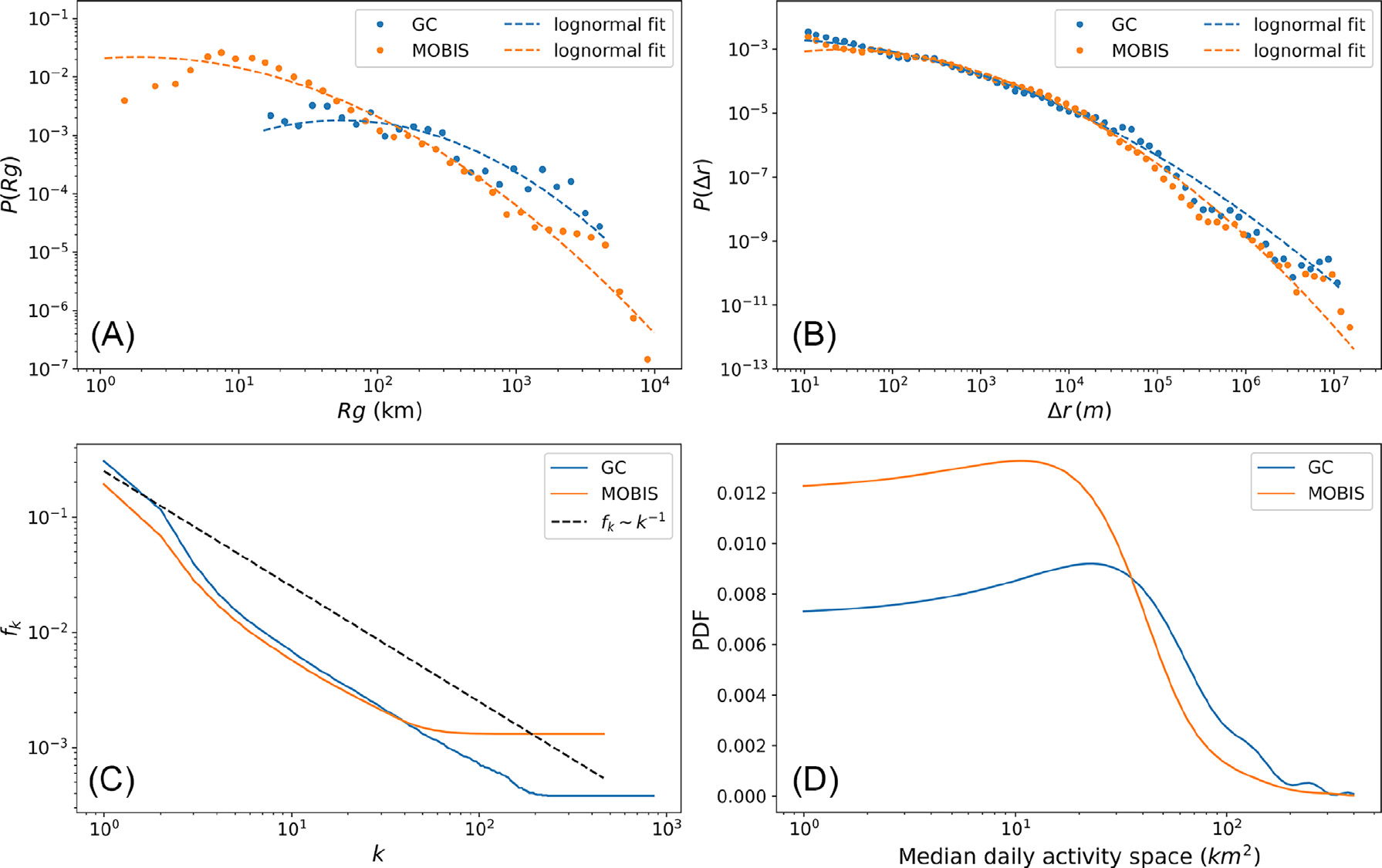Title: Conserved quantities in human mobility: From locations to trips

Abstract
Quantifying intra-person variability in travel choices is essential for the comprehension of activity–travel behaviour. Due to a lack of empirical studies, there is limited understanding of how an individual’s travel pattern evolves over months and years. We use two high-resolution user-labelled datasets consisting of billions of GPS track points from individuals to analyse individuals’ activity–travel behaviour over the long term. The general movement patterns of the considered population are characterised using mobility indicators. Despite the differences in the mobility patterns, we find that individuals from both datasets maintain a conserved quantity in the number of essential travel mode and activity location combinations over time, resulting from a balance between exploring new choice combinations and exploiting existing options. A typical individual maintains mode–location combinations, of which are travelled with a private vehicle every 5 weeks. The dynamics of this stability reveal that the exploration speed of locations is faster than the one for travel modes, and they can both be well modelled using a power-law fit that slows down over time. Our findings enrich the understanding of the long-term intra-person variability in activity–travel behaviour and open new possibilities for designing mobility simulation models.
Keywords
Human mobility;
Individual activity–travel pattern;
Intra-personal variability;
Mobility constraints
Software download
TrackIntel: https://urbancomp.net/archives/trackintel
Full Text Download
Transportation Research Part C: Emerging Technologies
Q.E.D.









